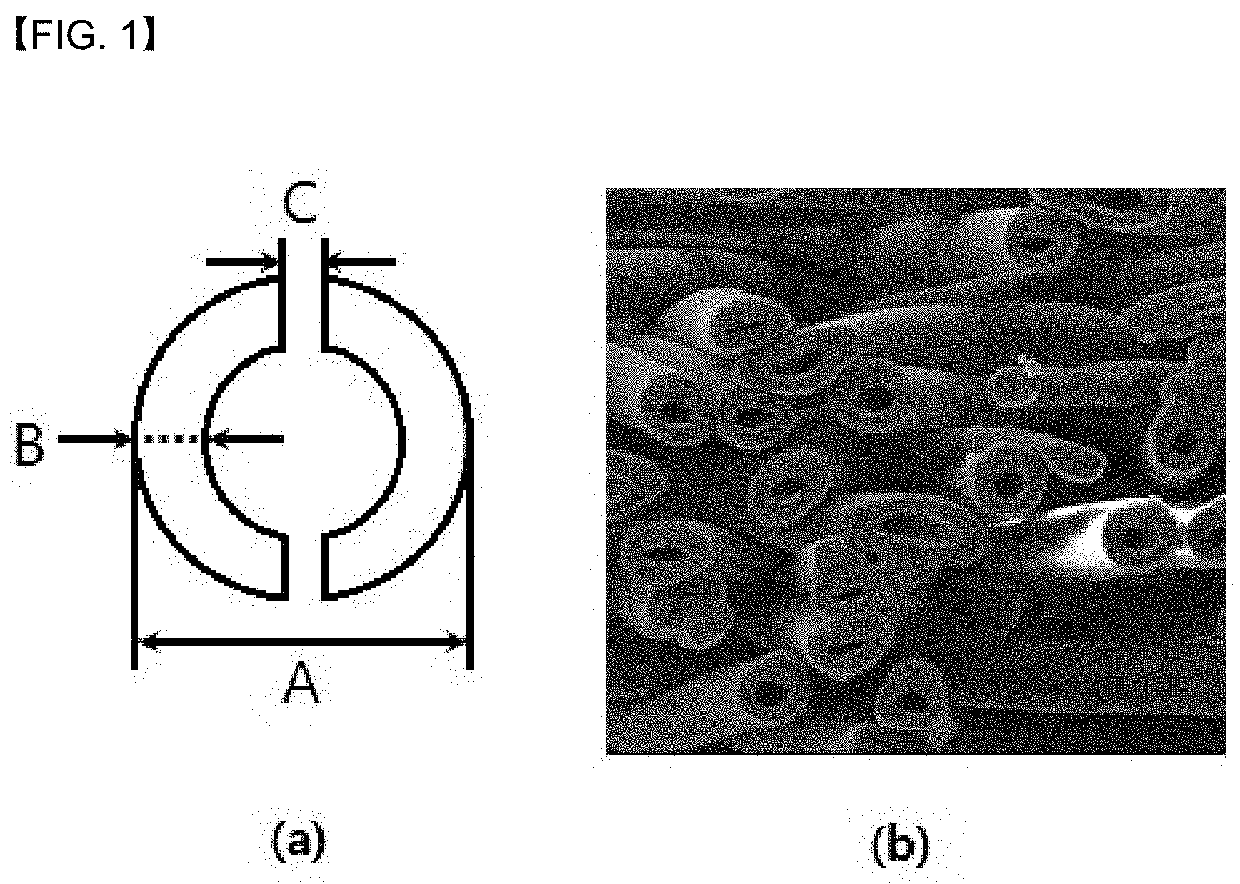Spunbonded nonwoven and tile carpet using the same
a non-woven fabric and tile technology, applied in the field of spunbond non-woven fabric, can solve the problems of poor spinnability, deterioration of product characteristics, chip agglomeration, etc., and achieve the effects of improving the physical properties of raw materials, excellent price competitiveness, and low foreign matter conten
- Summary
- Abstract
- Description
- Claims
- Application Information
AI Technical Summary
Benefits of technology
Problems solved by technology
Method used
Image
Examples
example 1
[0066]The first filament (recycled polyester having an IV of 0.65 dl / g, a content of 70 wt % relative to pure polyester of 30 wt %, and a melting point of 255° C., i.e., the content of recycled PET is 70 wt %) and the second filament (copolyester with a melting point of about 220° C.) each having a filament hollow ratio of 10% were melted using a continuous extruder at a spinning temperature of about 280° C., then subjected to conjugate spinning so that the content ratio of the first filament and the second filament became 30:70 wt %, and stretched, whereby the discharge amount and the number of spinneret capillaries were adjusted so that the average fineness of the first filament produced was 8.5 denier. Further, as the pure polyester, PET having a melting point of 255° C. and an intrinsic viscosity of 0.65 dl / g was used.
[0067]Then, the continuous filaments discharged from the capillaries were solidified with cooling air, and then stretched so that the spinning speed was 5000 m / min...
example 2
[0070]A spunbond nonwoven fabric was produced in the same manner as in Example 1, except that a recycled PET raw material having an IV of 0.72 dl / g and a melting point of 255° C. with a content of 100 wt % relative to pure polyester was applied as a first filament having a filament hollow ratio of 15%, and the thickness was adjusted to 0.35 mm at the same weight per unit area.
example 3
[0071]A nonwoven fabric was produced in the same manner as in Example 1, except that a recycled PET raw material having an IV of 0.72 dl / g and a melting point of 255° C. with a content of 100 wt % relative to pure polyester was applied as a first filament having a filament hollow ratio of 15%, and the thickness was adjusted to 0.38 mm at the same weight per unit area.
PUM
| Property | Measurement | Unit |
|---|---|---|
| melting point | aaaaa | aaaaa |
| melting point | aaaaa | aaaaa |
| size | aaaaa | aaaaa |
Abstract
Description
Claims
Application Information
 Login to View More
Login to View More - R&D
- Intellectual Property
- Life Sciences
- Materials
- Tech Scout
- Unparalleled Data Quality
- Higher Quality Content
- 60% Fewer Hallucinations
Browse by: Latest US Patents, China's latest patents, Technical Efficacy Thesaurus, Application Domain, Technology Topic, Popular Technical Reports.
© 2025 PatSnap. All rights reserved.Legal|Privacy policy|Modern Slavery Act Transparency Statement|Sitemap|About US| Contact US: help@patsnap.com

